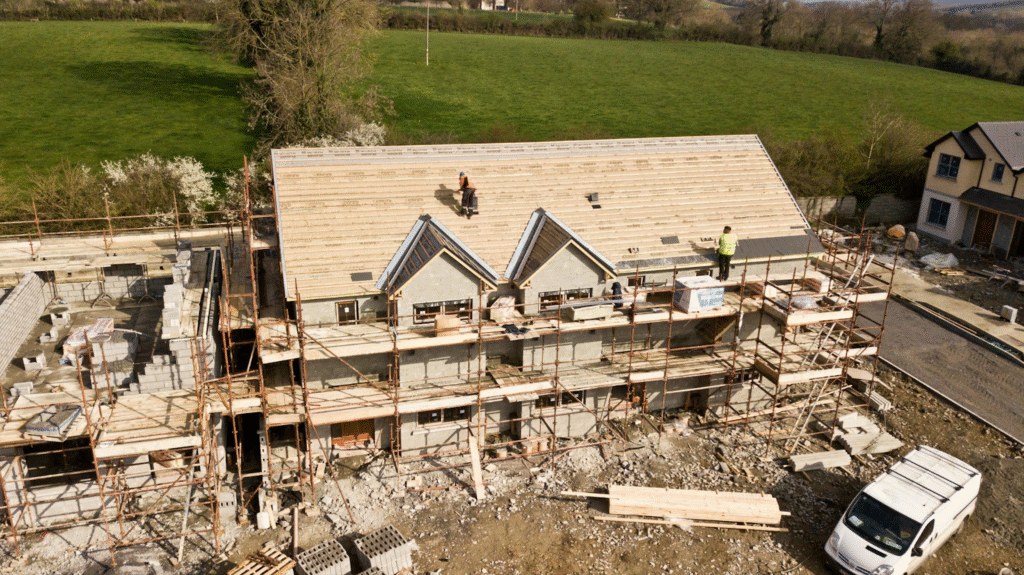A roof is one of the most crucial parts of any home, offering protection against the elements and helping to regulate indoor temperature. Over time, exposure to wind, rain, sun, and snow will gradually wear down even the most durable materials. When a roof starts to fail, the signs can be subtle at first. Waiting too long can lead to structural damage or costly repairs. Whether you’re noticing leaks, missing shingles, or just wondering how long your roof will last, understanding the early signs of trouble can save you a great deal of time and money.
How Old Is Your Roof?
One of the most reliable indicators that a roof may be nearing the end of its service life is its age. Different materials have different lifespans, and knowing how long your roof has been in place can help you assess its condition more accurately. For asphalt shingles, the average lifespan ranges from 20 to 25 years. Metal roofing can last 40 to 70 years, while tile and slate can extend well beyond that. If you’re unsure when your roof was installed, a professional roof age inspection tips checklist can help identify telltale signs of aging, such as brittle shingles, exposed underlayment, or uneven wear. These subtle clues can reveal more than just surface damage—they often signal deeper structural wear that warrants a closer look. Understanding your roof’s age helps frame whether small repairs are enough or if a full replacement is on the horizon.
Check for Leaks and Water Damage
Water stains on ceilings or walls can be a clear indicator that something isn’t right. These marks usually appear as brown rings or patches that slowly expand over time. In more advanced cases, you might see peeling paint, sagging drywall, or bubbling plaster. Not every leak means the entire roof needs to be replaced, but repeated leaks in different parts of the house often point to widespread failure.
Attic inspections can reveal additional clues. On a sunny day, look for streams of light filtering through the roof boards. Any visible daylight means gaps have formed, which water can easily exploit. Rotting wood, mold growth, or damp insulation are further signs that moisture has made its way into spaces it doesn’t belong. If these problems recur after patchwork repairs, full replacement may be more cost-effective than repeated fixes.
Inspect the Shingles Up Close
Shingles are your roof’s first line of defense. Their condition provides a good snapshot of your roof’s overall health. Curling edges, cracked surfaces, or missing pieces weaken your home’s protection and make it vulnerable to further damage.
Granule loss is another red flag. Asphalt shingles are coated in small mineral granules that provide UV protection and fire resistance. Over time, these granules can wash away. Finding them in gutters or at the base of downspouts is a sign that shingles are wearing out. Once the base material becomes exposed, the rate of deterioration increases rapidly.
Some damage is localized and can be repaired, but when large sections of shingles are cracked or bald, replacement becomes a better long-term choice. Discoloration or streaking could signal algae or moss, which hold moisture against the surface and speed up aging.
Look at the Flashing and Roof Valleys
Flashing consists of thin pieces of metal installed around roof joints, vents, chimneys, and skylights to prevent water penetration. Over time, flashing can rust, lift, or crack, especially if it was installed improperly or has aged out of its usable life. Compromised flashing allows water to seep underneath the roofing materials, damaging the structure beneath.
Roof valleys—the channels where two slopes meet—are especially vulnerable. These areas funnel rainwater and snowmelt, placing extra stress on the materials. If shingles in the valleys are missing, broken, or deteriorating, this is a strong indicator that the roof is no longer capable of managing water effectively.
Even well-maintained flashing and valleys degrade with time. Regular maintenance can prolong their life, but if problems persist after multiple repairs, it’s usually time to look beyond patching and start thinking about a full replacement.
Notice Sagging and Structural Deformation
A straight roofline is a good roofline. Any visible sagging or dipping could be a serious warning. Structural deformation often indicates problems beneath the surface layers—perhaps rotting roof boards, compromised trusses, or water-saturated decking. Snow accumulation or trapped moisture may have weakened internal support systems, creating uneven weight distribution.
From the ground, take a few steps back and look at your roof from different angles. Bulging areas, dips between rafters, or irregular outlines can be spotted without needing to climb a ladder. These signs are often overlooked but can precede a complete structural failure if left unchecked.
An inspection by a roofing contractor can confirm the cause and extent of the damage. In many cases, sagging calls for more than just re-shingling. The underlying woodwork may need to be replaced entirely, which is typically done during a full roof replacement.
Knowing when to replace your roof starts with paying attention to warning signs. Age, leaks, damaged shingles, failing flashing, structural issues, and rising energy bills all point to the same conclusion: your roof may no longer be doing its job. These signs don’t always appear overnight. They build up slowly until a tipping point is reached.





